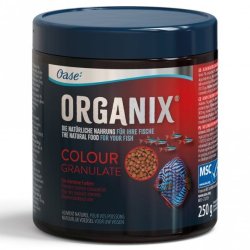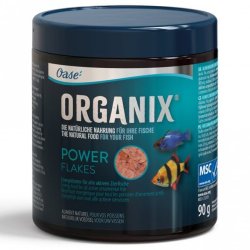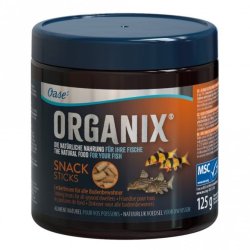I've been involved in a few interesting threads about fish food ingredients and learned things in the last month I had no idea about from previous 10 years experience with tropical fish. I don't think I even bothered looking at the ingredients list in fish food, except for when I had Mbuna Malawi.
Am i correct in thinking that fish meal is one of the cheapest ingredients available and it's composition can include the left over bits from fish that no one else really wants? Companies can put the cheapest and most non-nutritional bits of fish into fish food as the main ingredient and just call it "fish meal"?
We know that the first item on the list of ingredients is the greatest ingredient and so forth, and if fish meal is on the ingredients, it's usually the first (main) ingredient.
I noticed Tetra use the term "fish and fish derivatives" and I wondered if this might be the same or similar to "fish meal"?
Also, am i correct that ingredients listed as "whole" such as "whole fish" is better? And even better still would be named whole fish such as "whole salmon", "whole herring" or "whole shrimp"?
I purchased these today OASE ORGANIX (see end of thread for pictures) and like the ingredients. I only got the "colour" one because it was the only micro granule they had. See below for some examples of fish foods and their main 5 ingredients.
Oase Organix granulate micro
Whole salmon, wheat germ, wheat flour, whole shrimp, whole herring
Oase Organix power flakes
Whole salmon, whole shrimp, wheat flour, whole herring, kelp
Oase Organix snack sticks
Whole salmon, whole shrimp, wheat flour, wheat germ, whole herring
Fluval Bug Bites tropical granules
Dried black soldier fly larvae, salmon, fish protein concentrate, green peas, potato
Fluval Bug Bites bottom feeder
Dried black soldier fly larvae, salmon, wheat, green peas, potato
Tetra min flakes
Fish and fish derivatives, Cereals, Yeasts, Vegetable protein extracts, Molluscs and crustaceans
Tetra micro granules
Fish and fish derivatives, Cereals, Vegetable protein extracts, Vegetables, Derivatives of vegetable origin
Tetra Pro/Premium
Fish and fish derivatives, Vegetable protein extracts, Cereals, Yeasts, Oils and fats
Hikari tropical micro pellets
Fish meal, krill meal, soybean meal, flaked corn, cuttlefish meal
Hikari tropical sinking wafers
Fish meal, wheat germ meal, soybean meal, wheat flour, whole crushed silkworm pupae
Hikari cichlid gold sinking
Fish meal, wheat flour, flaked corn, brewers dried yeast, corn gluten meal
Am i correct in thinking that fish meal is one of the cheapest ingredients available and it's composition can include the left over bits from fish that no one else really wants? Companies can put the cheapest and most non-nutritional bits of fish into fish food as the main ingredient and just call it "fish meal"?
We know that the first item on the list of ingredients is the greatest ingredient and so forth, and if fish meal is on the ingredients, it's usually the first (main) ingredient.
I noticed Tetra use the term "fish and fish derivatives" and I wondered if this might be the same or similar to "fish meal"?
Also, am i correct that ingredients listed as "whole" such as "whole fish" is better? And even better still would be named whole fish such as "whole salmon", "whole herring" or "whole shrimp"?
I purchased these today OASE ORGANIX (see end of thread for pictures) and like the ingredients. I only got the "colour" one because it was the only micro granule they had. See below for some examples of fish foods and their main 5 ingredients.
Oase Organix granulate micro
Whole salmon, wheat germ, wheat flour, whole shrimp, whole herring
Oase Organix power flakes
Whole salmon, whole shrimp, wheat flour, whole herring, kelp
Oase Organix snack sticks
Whole salmon, whole shrimp, wheat flour, wheat germ, whole herring
Fluval Bug Bites tropical granules
Dried black soldier fly larvae, salmon, fish protein concentrate, green peas, potato
Fluval Bug Bites bottom feeder
Dried black soldier fly larvae, salmon, wheat, green peas, potato
Tetra min flakes
Fish and fish derivatives, Cereals, Yeasts, Vegetable protein extracts, Molluscs and crustaceans
Tetra micro granules
Fish and fish derivatives, Cereals, Vegetable protein extracts, Vegetables, Derivatives of vegetable origin
Tetra Pro/Premium
Fish and fish derivatives, Vegetable protein extracts, Cereals, Yeasts, Oils and fats
Hikari tropical micro pellets
Fish meal, krill meal, soybean meal, flaked corn, cuttlefish meal
Hikari tropical sinking wafers
Fish meal, wheat germ meal, soybean meal, wheat flour, whole crushed silkworm pupae
Hikari cichlid gold sinking
Fish meal, wheat flour, flaked corn, brewers dried yeast, corn gluten meal





